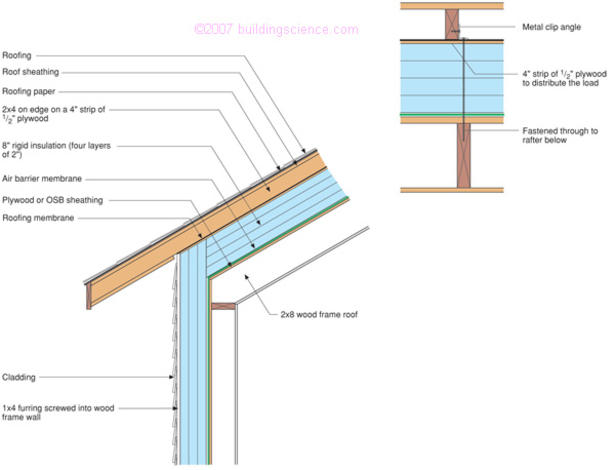By removing the old insulation you ll expose the ceiling.
Adding vent to sealed attic.
Obviously it s a bit more complex than that but not much.
Never cover attic soffit vents with insulation use rafter vents and soffit vents to maintain airflow.
However if your attic has blocked soffit vents and is not well sealed from the rest of the house attic fans will suck cool conditioned air up out of the house and into the attic.
Intake vents located at the lowest part of the roof under the eaves allow cool air to enter the attic.
Direct all exhaust fans and vents to the exterior.
Space the holes 12 to 14 in.
Position and fasten the vents.
Attic fans are intended to cool hot attics by drawing in cooler outside air from attic vents soffit and gable and pushing hot air to the outside.
With the help of an assistant raise the vent up to the soffit and center it over the cutout slot.
Protect yourself as you install your insulation.
First the fumes and chemicals which are connected with keeping a car or using power tools means that you need to draw these away from the rest of the house and second heat build up in an attached garage will also make the house.
If you ve got a vented attic that gets hot in the summer your first option is leave the attic vented and make sure the ceiling is air sealed and insulated as well as possible.
If you ve got an older home and it needs more insulation you ve got the perfect opportunity.
When you re done sealing your attic bypasses push the insulation back into place with an old broom handle or stick as you back out of the attic.
Hot air exhaust vents located at the peak of the roof allow hot air to escape.
Apply self adhesive foam weatherstrip tape to the top edge of the stop.
Mark the roof venting locations from the attic where you can see the rafters and avoid placing roofing vents over them.
Correct that mistake so that humid exhaust air doesn t get trapped in your insulation and ruin it.
Then finish up by sealing the access hatch with self sticking foam weatherstrip photos 10 and 11.
Though it s against building code to vent any kind of exhaust to an attic space many home builders have gotten away with this shortcut.
Attic ventilation is usually pretty simple.
Next lay the strip vent down on a flat wood surface such as a plywood sheet or long 2 x 4 and drill 1 8 in dia.
For best performance vented attics need a balanced amount of intake vents and exhaust vents in a quantity determined by the attic s square footage.
When you have built an attached garage you will need to think about adding some ventilation to the area ventilating garages properly is vital for two reasons.
Sealed attic construction by excluding vents to the exterior can be a good way to exclude moisture laden outside air from attics and may offer a more easily constructed alternative for air leakage control at the top of residential buildings.
Photos 1 6 show how it s done.

